Explain :
(i) μofNH3>NF3
(ii) μofCH3C1>CH3F>CH3Br>CH3I
(iii) μofCO2 is zero, nut μofSO2≠0
(iv) Why the lone pair of ¯e,s has no effect on the μ of
PH3. The bond angle in
PH3 is 92∘.
(v) μofCH2C12>CHC13.
[Resulant−(μ)ofNH3Resultant−(μ)ofNF3=4.90×10−3Cm=0.80×10−30Cm]
In NH3 the net moment of (N−H) bonds and the contribution from the lp e−'s (lone pair e−'s) are in the same direction and are additive [see (a) given above] The net moment of teh (N−F) bond opposes the dipole effect of the lpe−' in NH3 and the resultant is less than μSo,μ of Nh3>NF3
(b) The electronegatives of halogens decrease from F to So μ of HF>HCI>HBr>HI But μ of CH3F is smaller than CH3CI due to shorter (C−F) bond distance, although EN of F is greater than that of CI
(c ) In CO2'C is sp hybridised and linear The bond moments of (C−O) are equal and in opposite directions and cancel each other Hence μ is zero
in SO2 is sp2 hybridised having one lpe¯ on S atom. The (O−S−O) bond angle is nerly 120(S−O) bond moment does not cancel and shows a net resultant mu
(d) The 92∘ bond angle suggests that P uses three P atomic orbitals in forming bonds with H with one lpe− in 3s atomic orbital i.e P in PH3 is sp2 hybridised (unlike NH3 in which N is sp3 hybridised) Therefore, due to the presence of lpee−'s in 3s atomic orbital of P which is spherical symmetrical the polarity of the molecule is not affected. In order to effect the polarity of the molecule the e−s must be in a directional orbital Moreover, EN of P and H are nearly same so PH3 molecule is almost non-polar
In (I) all bond momnets are in the same direction so they are additive and the net resultant mu is more than (II) In (II) the bond moment of one of the CI atoms opposes, the net moment of the other two, so the net resultant mu is less than that of (I)
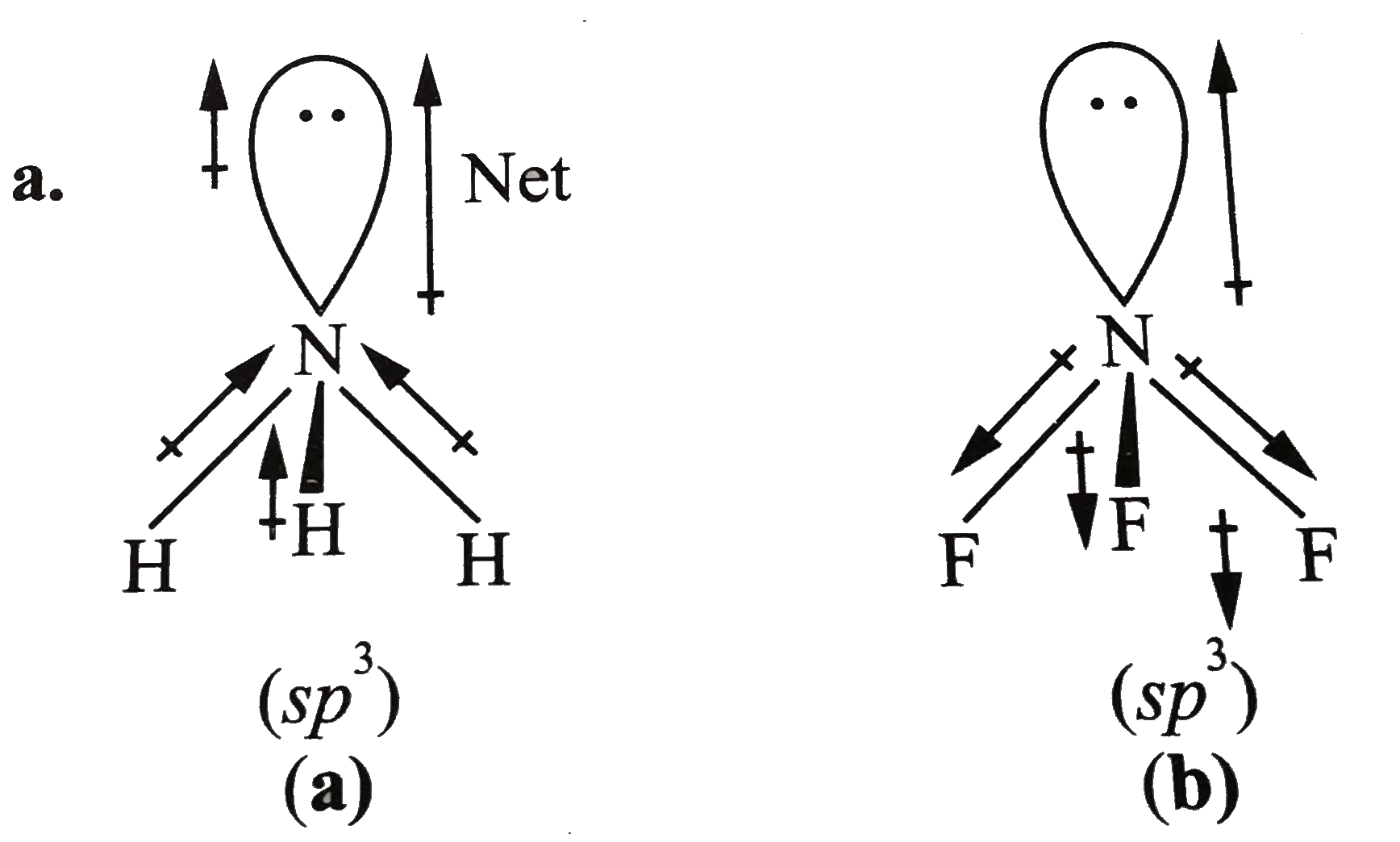

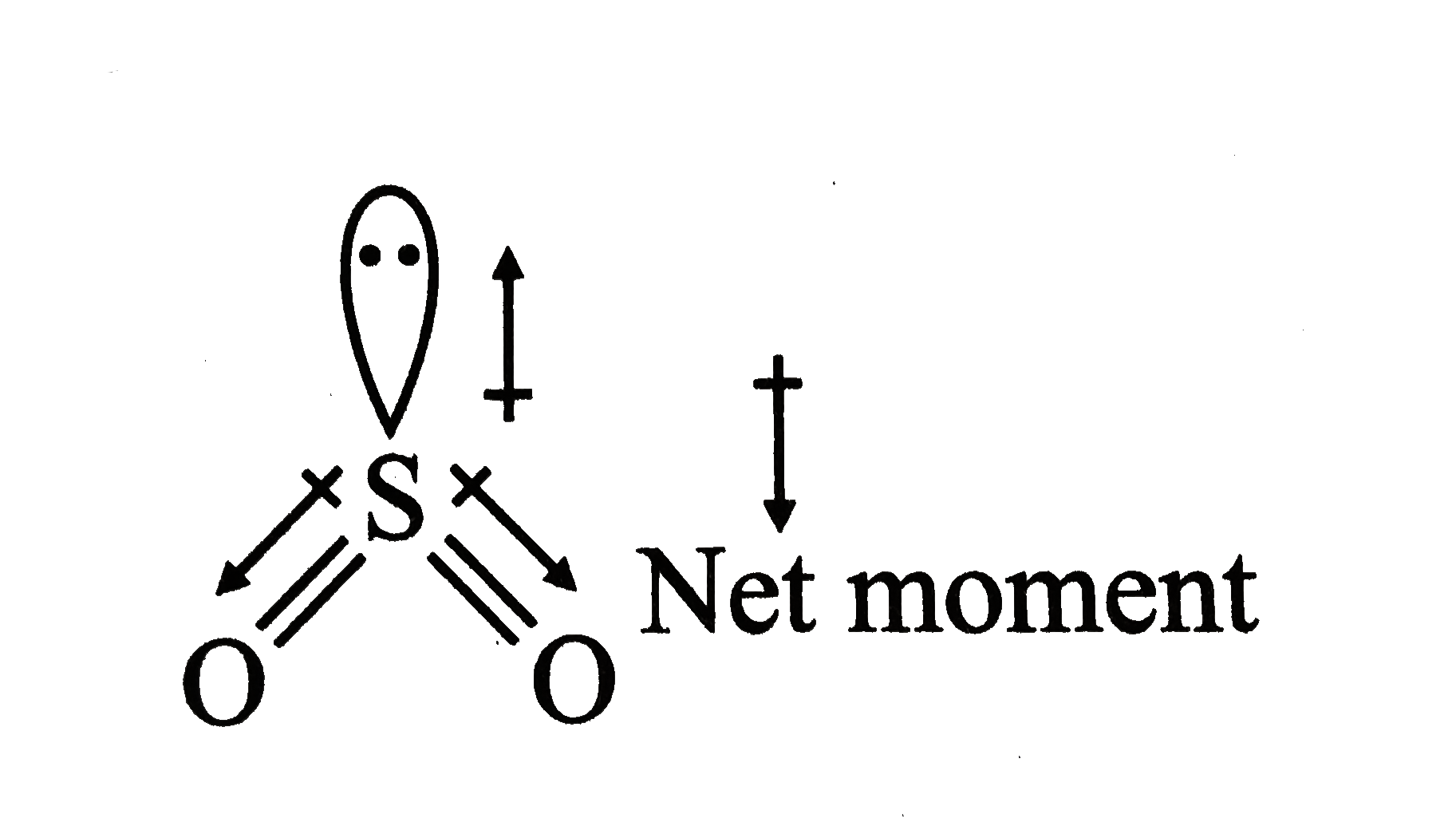
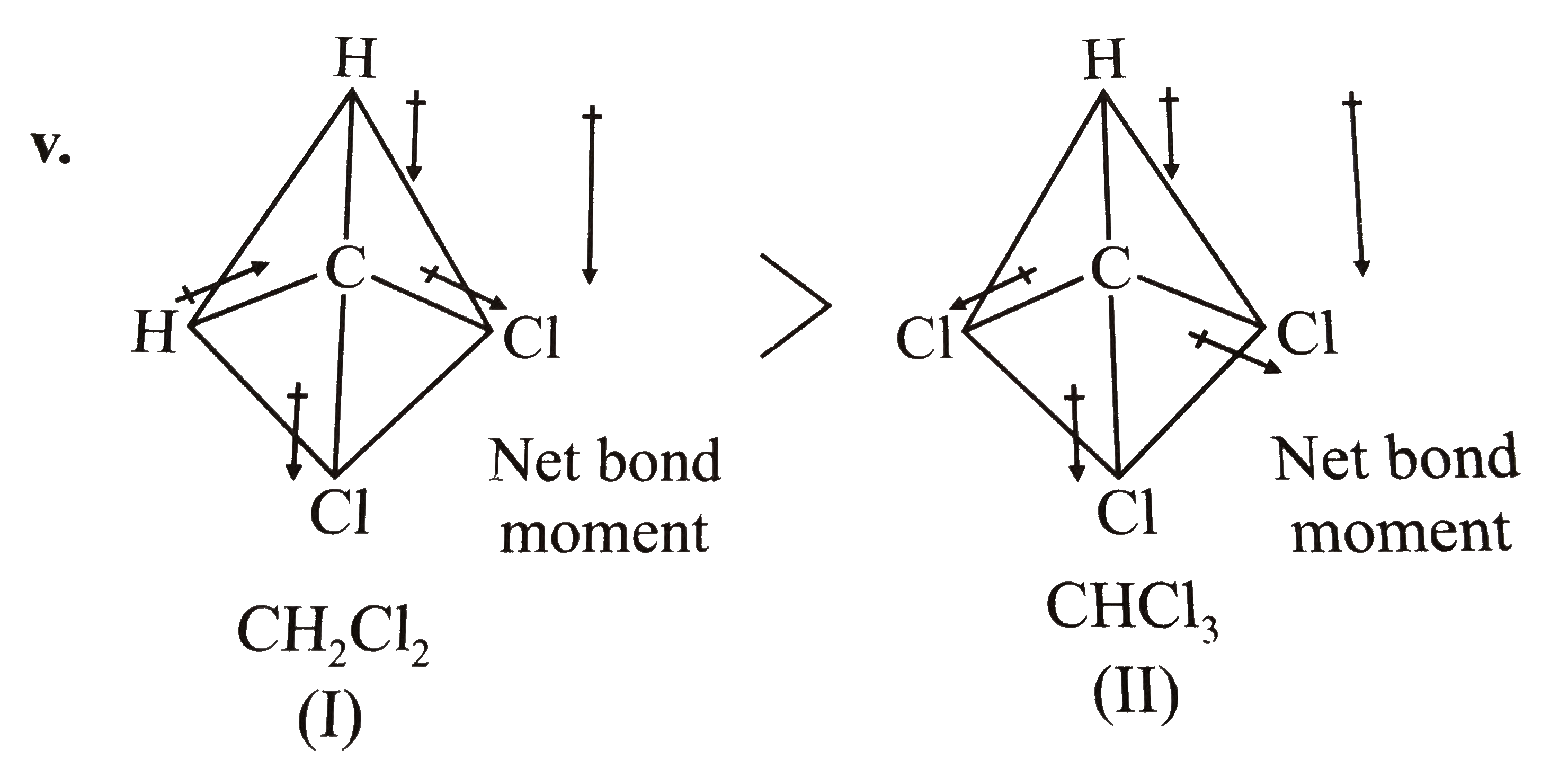 .
.
Topper's Solved these Questions
- CHEMICAL BONDING AND MOLECULAR STRUCTUREBook:CENGAGE CHEMISTRYChapter:CHEMICAL BONDING AND MOLECULAR STRUCTUREExercise:Solved Examples
Explore 36 Videos
- CHEMICAL BONDING AND MOLECULAR STRUCTUREBook:CENGAGE CHEMISTRYChapter:CHEMICAL BONDING AND MOLECULAR STRUCTUREExercise:Ex 2 .2 Subjective (Intermolecular Forces And H-Bonding)
Explore 7 Videos
- ATOMIC STRUCTUREBook:CENGAGE CHEMISTRYChapter:ATOMIC STRUCTUREExercise:Concept Applicationexercise(4.3)
Explore 19 Videos
- CHEMICAL EQUILIBRIUMBook:CENGAGE CHEMISTRYChapter:CHEMICAL EQUILIBRIUMExercise:Archives (Subjective)
Explore 11 Videos
Similar Questions
Knowledge Check
In the figure shown, μ1>μ2>μ3. What are the limits of angle i so that it is neither get total internal reflection at AB nor at CD ?
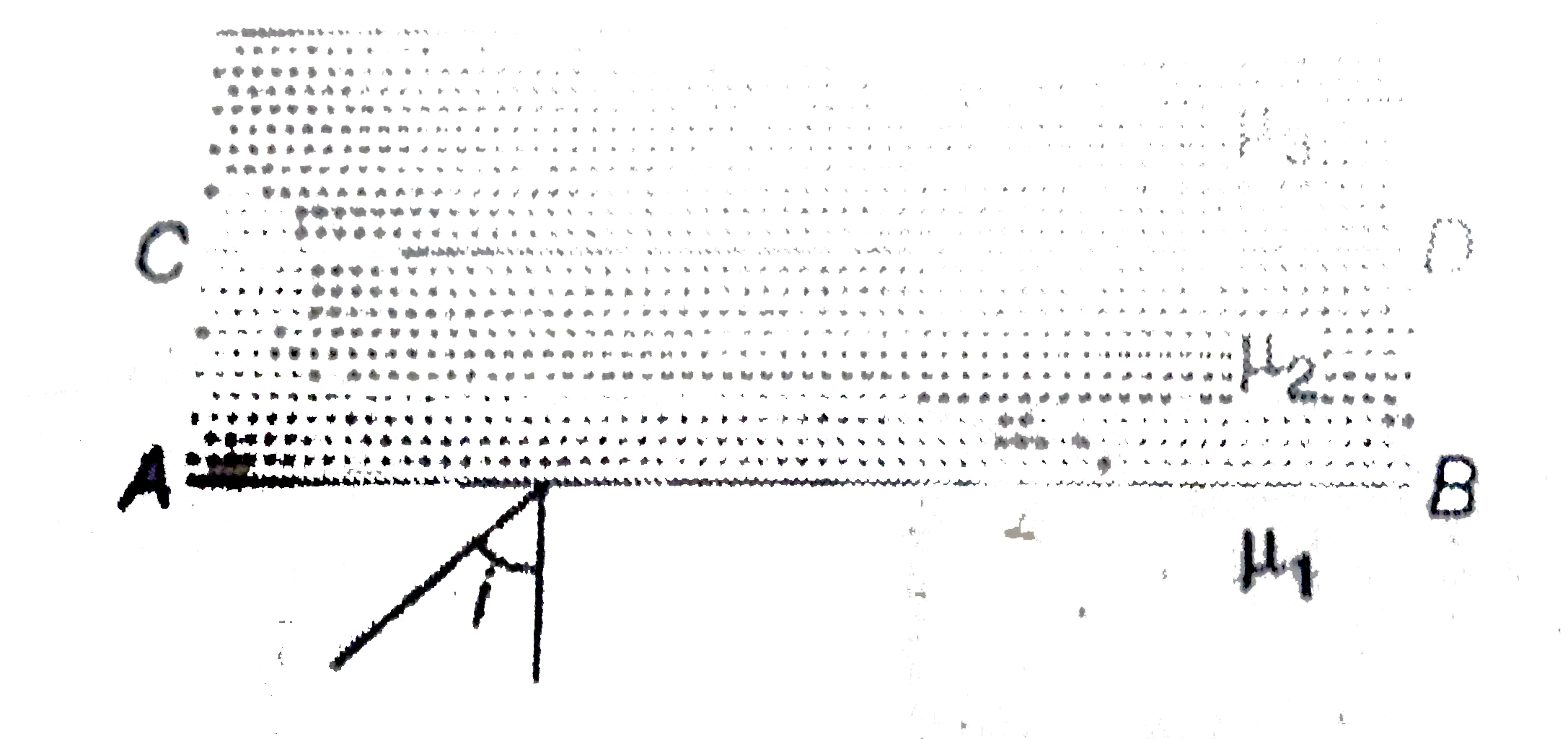 Asini<μ2(μ2)Bsini<μ3(μ1)Csini<μ3(μ2)DNone of these
Asini<μ2(μ2)Bsini<μ3(μ1)Csini<μ3(μ2)DNone of theseWhich of the following should be most volatile?
I) CH3CH2CH2NH2II)(CH3)3NIII)
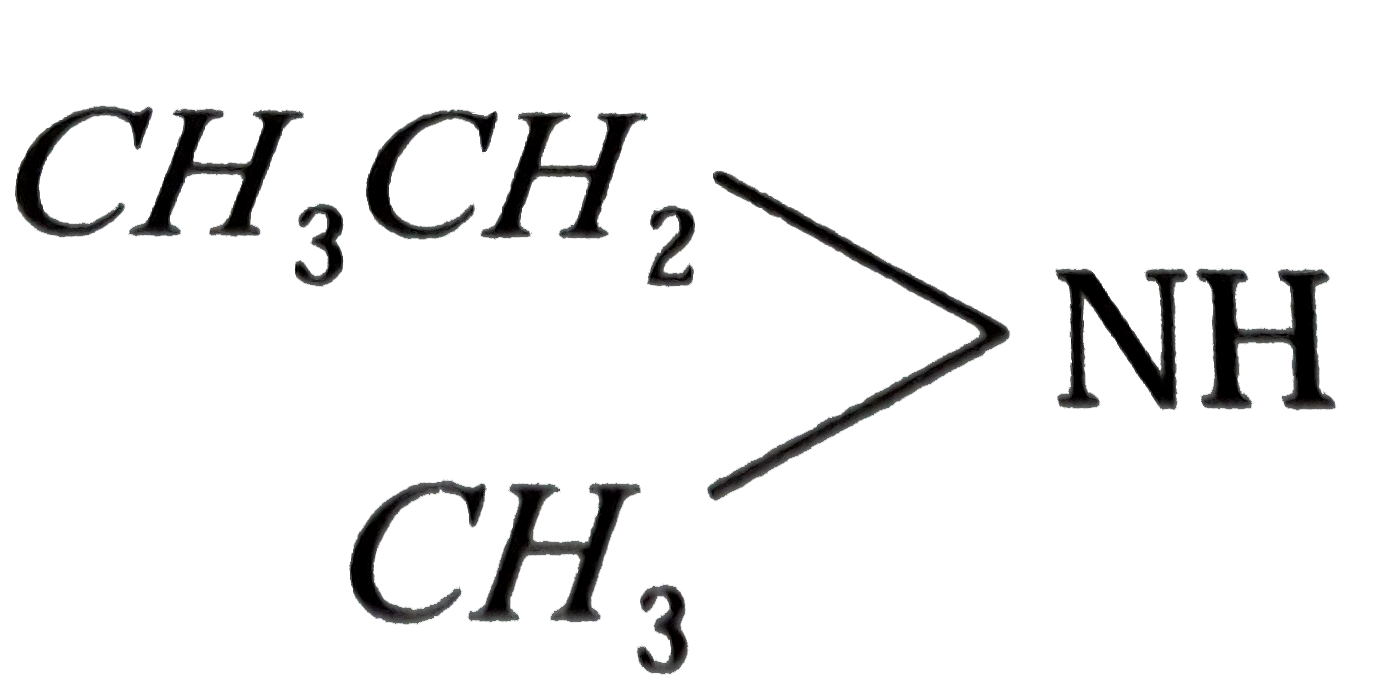
IV) CH3CH2CH3AIIBIVCIDIIIAmong (i) C6H5NH2 (ii) CH3NHCH3 (iii) (CH3)2NCH3 and (iv) NH3 , the correct order of basic strength follows the order
A(ii)>(iii)>(iv)>(i)B(ii)>(iii)>(i)>(iv)C(iii)>(ii)>(iv)>(i)D(iii)>(ii)>(i)>(iv)
What is the type of hybridisation of each carbon in the following compounds ?
(i) CH3CH3
(ii) CH3CI
(iii) (CH3)2CO
(iv) CH3CN
View SolutionArrange the following compounds in the order of increasing boiling points :
(i) CH3COC1
(ii) (CH3CO)2O
(iii) CH3CONH2
(iv) CH3COOH.
View SolutionWhich compound in each of the following pairs will react faster in SN2 reaction with −OH ?
(i)CH3Br or CH3I (ii)(CH3)3CCl or CH3Cl
View SolutionIsoelectronic structures among the following structures are :
(I)CH+3,(II)H3O+(III)NH3,(IV)CH−3.
View SolutionAssertion. Acidity of the C-H bond decreases in the order: HC≡CH>H2C=CH2>CH3−CH3
Reason. Acidity of the C-H bond increases as the electronegativity of the carbon to which it is attached increases
View Solution